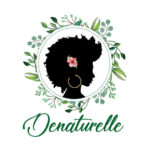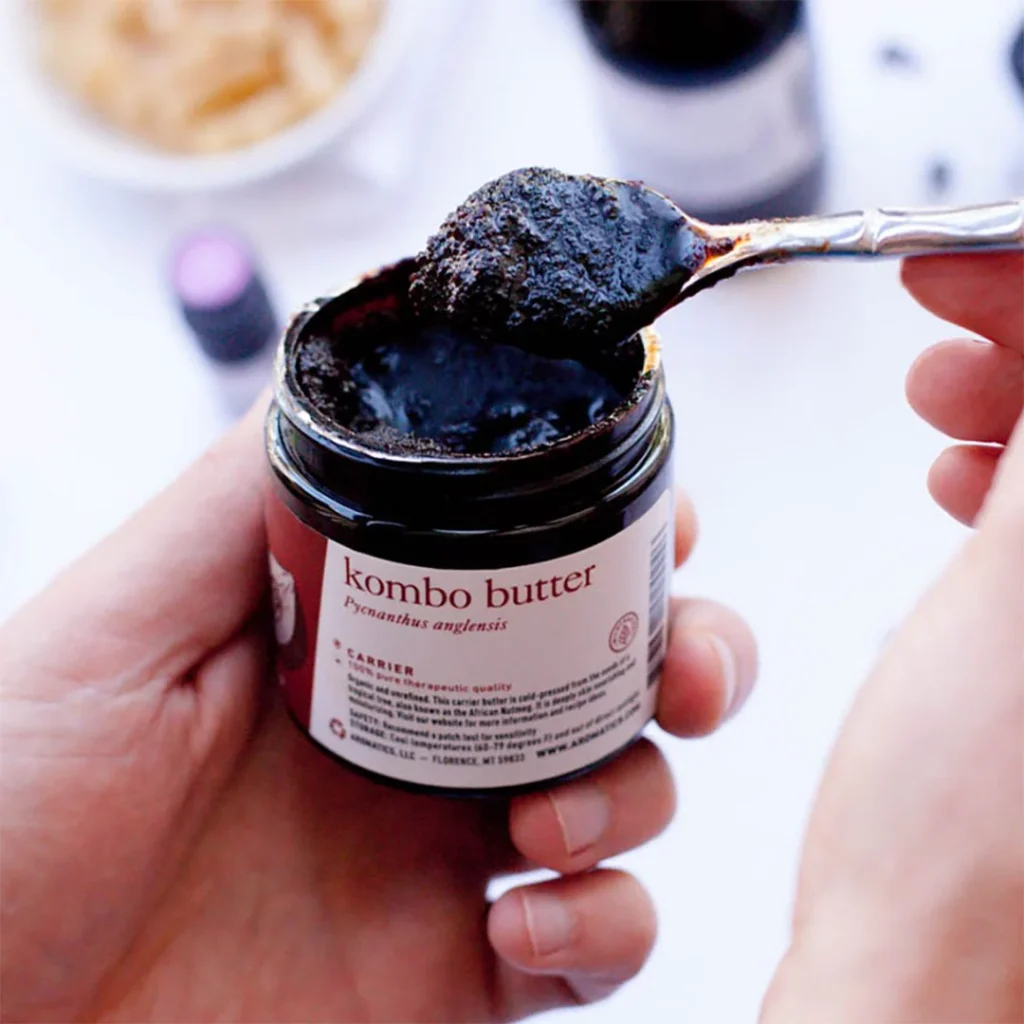The Richness of African Butters in Cosmetics
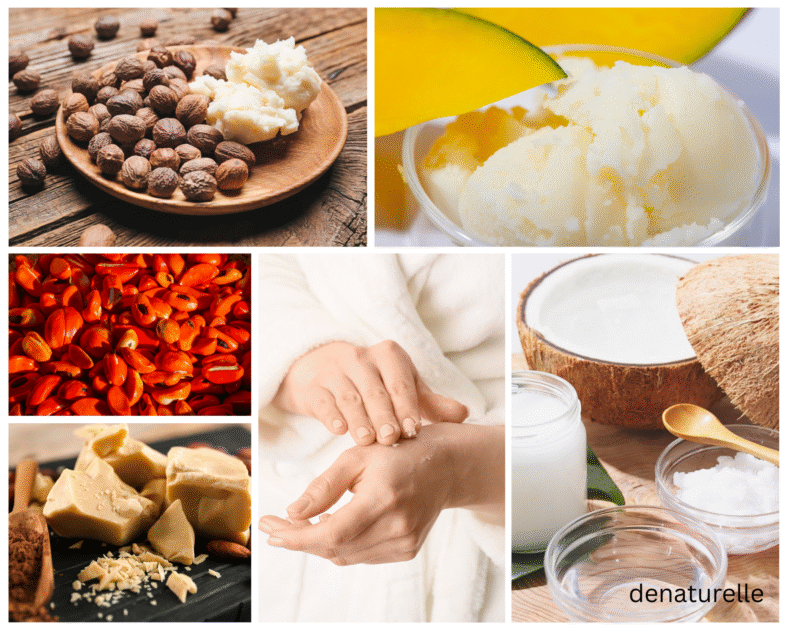
From the sun-drenched savannas to the lush tropical rainforests, Africa is home to some of the most nutrient-rich and skin-loving natural ingredients on the planet. Among these treasures are a range of **natural plant butters** that have become staples in global beauty products. These butters are packed with vitamins, essential fatty acids, and antioxidants, making them incredibly beneficial for skin and hair health.
In this article, we’ll explore some of the most popular **African butters** used in cosmetics, their benefits, and why they’ve become must-have ingredients in skincare and haircare.
Shea butter
From West and Central Africa – primarily Ghana, Nigeria, Burkina Faso, and Mali
It is rich in fatty Acids: Oleic, stearic, linoleic, and palmitic acids
There are two types of shea butter: Vitellaria paradoxa and Nilotica
Vitellaria paradoxa
Shea butter is a natural fat extracted from the nuts of the shea tree mostly Vitellaria paradoxa, which grows primarily in West Africa. The nuts are harvested, roasted, crushed, and processed to create the creamy, off-white butter that has become a staple in many cosmetic and skincare products.
Benefits:
- Deeply moisturizing and nourishing for hair and skin
- Rich in vitamins A, E, and F
- Anti-inflammatory and healing properties
- Great for dry skin, eczema, psoriasis and minor burns
- Boosts collagen production
- Natural UV protection (low SPF)
Shea Nilotica is a subpar of Vitellaria paradoxa
It is mainly found in East Africa — especially Uganda, South Sudan, and parts of Kenya
Benefits:
- Extra moisturizing for sensitive, dry, or aging skin
- Non-comedogenic (less likely to clog pores)
- Excellent for babies, eczema, and delicate skin
- Smoother texture makes it ideal for lotions, serums, and leave-on products
Why It’s Popular:
Shea butter is perhaps the most well-known African butter, often dubbed the “skin superfood.” It’s solid at room temperature but melts into the skin without clogging pores. Its versatility makes it perfect for everything from lip balms and lotions to hair masks and baby care products.
Cocoa butter (Theobroma cacao) dubbed “The Skin softener”
Grown in tropical regions of West Africa, including Ivory Coast and Ghana.
Cocoa butter is a fat extracted from cocoa beans during the chocolate-making process. The beans are fermented, roasted, and then cold-pressed to extract the butter, leaving behind cocoa solids used for making chocolate. It results in a butter which is creamy and has a characteristic rich, sweet scent reminiscent of chocolate
Benefits:
- High in fatty acids for deep hydration
- Helps reduce the appearance of scars and stretch marks
- Natural emollient that improves skin elasticity
- Rich in antioxidants (especially vitamin E).
- Moisturizing and protective for the skin as it is excellent for dry, cracked skin
- Has a stable shelf life due to natural antioxidants.
Why It’s Popular:
Cocoa butter has a delicious chocolate scent and is commonly used in body butters, lotions, and pregnancy skincare products. It helps maintain skin tone and texture and is beloved for its rich, creamy consistency.
Mango butter (Mangifera indica) dubbed *The Gentle Healer*
Native to South-east Asia but also found in tropical regions of Africa and South America.
It is softer and more neutral and often preferred in cosmetics.
Benefits:
- Rich in fatty acids (oleic, stearic, palmitic)
- Helps relieve itchiness, irritation, and inflammation (great for eczema or sensitive skin).
- Contains anti-inflammatory properties due to polyphenols and phytosterols.
- Packed with antioxidants (vitamin A, C, and E) that fight free radical damage.
- May reduce the appearance of fine lines, wrinkles, and age spots over time.
- Promotes healing of small wounds, cracks, or sun-damaged skin.
- Non-Comedogenic as it does not clog pores (rated 0–2 on the comedogenic scale), thus suitable for acne-prone and oily skin.
Why it’s popular
Mango butter is popular because it offers a range of skin and hair benefits while being lightweight, non-greasy, and full of nourishing vitamins. Its gentle, soothing, and healing properties make it a great option for many, especially those with dry, irritated, or sensitive skin.
Mafura Butter (Trichilia emetica) dubbed “The Anti-Aging Powerhouse”
From Southern and Eastern Africa (Mozambique, Zimbabwe, Botswana, South Africa)
It is a soft butter or semi-solid oil at room temperature with a pale yellow to creamy color
And with a mild, earthy or nutty aroma scent.
Benefits:
- Traditionally used in African healing practices, mafura butter contains limonoids and triterpenes known for their anti-inflammatory and antimicrobial effects. It’s useful for soothing eczema, rashes, and minor wounds.
- High in antioxidants and oleic acid
- Non greasy, fast-absorbing and non-comedogenic.It also spreads easily (making it also suitable for massage) and for all skin types
- Helps reduce fine lines and restore skin elasticity
Why It’s Popular:
In many African communities, Mafura butter has been used for generations in skin healing rituals, massage oils, and even as a natural insect repellent. Its versatility and healing properties have made it a staple in traditional medicine cabinets long before it entered the global beauty scene.
Kombo Butter (Pycnanthus angolensis) dubbed “The Muscle & Joint Soother”
From West Africa and Central Africa (Ghana, Nigeria, Cameroon)
Kombo butter is a rich, dark-colored natural butter extracted from the seeds of the Pycnanthus angolensis tree, native to West and Central Africa. Also known as African nutmeg butter or musky nutmeg butter, kombo butter is not as widely known as shea or cocoa butter, but it has potent therapeutic properties—especially for pain relief, inflammation, and skin healing.
Benefits:
- It is an anti-inflammatory ‘Powerhouse’ which is rich in myristoleic acid, a rare fatty acid with powerful anti-inflammatory and analgesic effects.
- Used as a natural Pain Relief as it is traditionally used to treat rheumatism, sprains, and swelling.
- Commonly used for arthritis, muscle aches, and joint pain when applied topically.
- Works well when combined with essential oils (e.g., eucalyptus, peppermint) in massage balms.
- Has wound healing & skin repair properties
- Promotes regeneration of damaged tissue.
- Soothes skin conditions like eczema, psoriasis, insect bites, and burns.
- Deeply moisturizes as it is rich in fatty acids, helping to restore dry, cracked, or chapped skin.
- Especially beneficial for elbows, heels, and hands.
- Contains natural antioxidants that help neutralize free radicals and protect skin cells from damage.
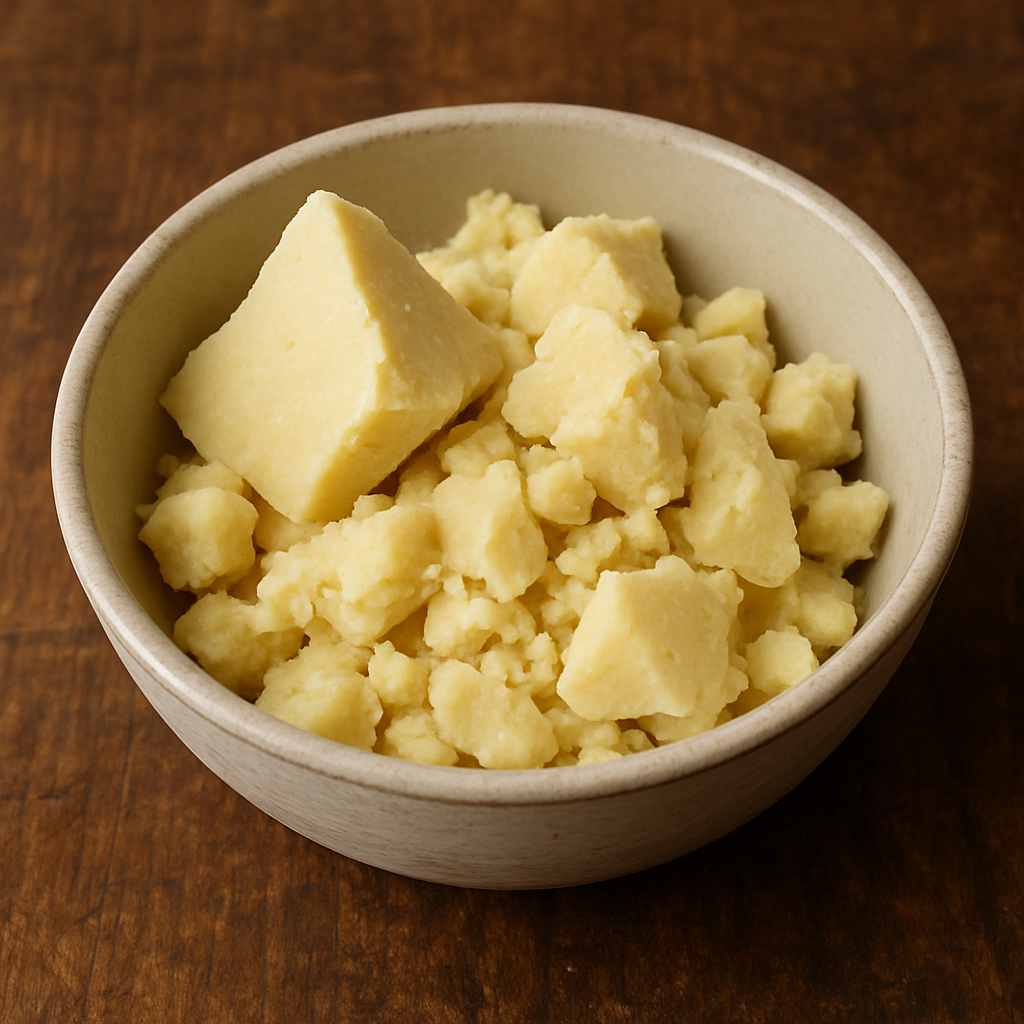
Kpangnan butter (Pentadesma butyracea)
Kpangnan butter (pronounced pahn-nyan) is a lesser-known, exotic natural butter native to West Africa, especially Benin, Togo, and Ghana. It is derived from the nuts of the Pentadesma butyracea tree—sometimes called the “African butter tree.” This butter is gaining recognition for its deep moisturizing, anti-inflammatory, and skin-repairing properties.
It’s sometimes referred to as a shea butter alternative, but it has distinct benefits and a unique fatty acid profile as it is rich in Especially stearic and oleic acids. It is harder than shea butter but melts easily on skin contact and has a mild, slightly nutty or earthy scent.
Benefits:
- Rich in stearic and oleic acids, kpangnan butter deeply nourishes dry or cracked skin.
- Has anti-inflammatory and analgesic properties
- Promotes skin regeneration
- Contains stigmasterol, a rare plant sterol known for its strong anti-inflammatory properties.
- Great for calming eczema, psoriasis, sunburn, and insect bites.
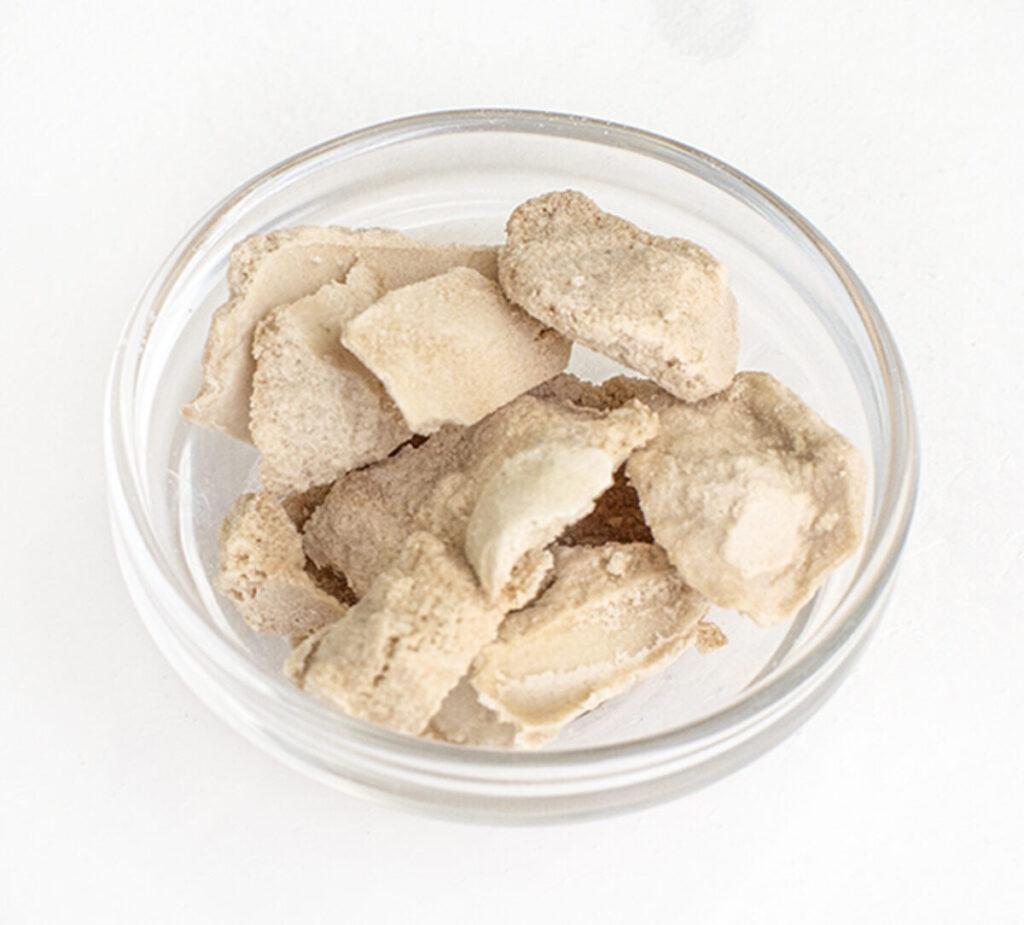
Allanblackia butter (Allanblackia floribunda and A. parviflorar)
Allanblackia butter from Allanblackia floribunda and A. parviflora trees is a rare, plant-based fat extracted from the seeds of the Allanblackia tree, native to tropical Africa (especially Ghana, Nigeria, Tanzania, and Cameroon). The butter is rich, solid at room temperature, and gaining attention for its emollient, non-greasy, and stabilizing qualities in skincare and cosmetic formulations.
Benefits:
- Rich in stearic acid (up to 60–70%), Allanblackia butter provides long-lasting hydration and smoothness – great for skin and hair conditioning
- Has a non-greasy texture. Despite being a butter, it has a dry, silky feel—similar to some esters or lightweight oils.
- Absorbs quickly, making it great for lotions, creams, and body butters that don’t feel heavy.
- Forms a soft, breathable film that locks in moisture without clogging pores.
- Helps rebuild the skin’s lipid barrier, especially in dry, flaky, or mature skin.
- Reduces transepidermal water loss (TEWL) and improves skin elasticity.
- It is sensitive skin-friendly as it is gentle and non-comedogenic, making it suitable for eczema, psoriasis, or reactive skin types.
- Improves the consistency and shelf life of creams and balms.
Conclusion
African butters bring centuries of traditional skincare wisdom to modern cosmetic formulations. Whether you’re looking to hydrate dry skin, tame frizzy hair, or soothe irritated skin, dry hair and scalp, these natural butters offer a pure and effective solution. Look for them in your favorite natural and organic beauty products—or better yet, try incorporating raw butters into your own DIY skincare routine!
Have you tried any African butters in your beauty routine? Let us know your favorites in the comments below!
